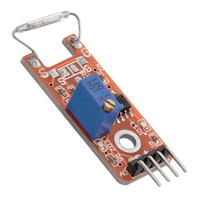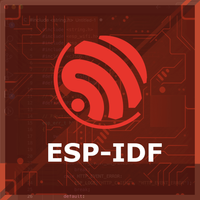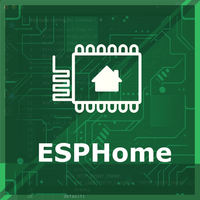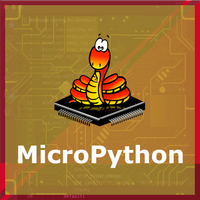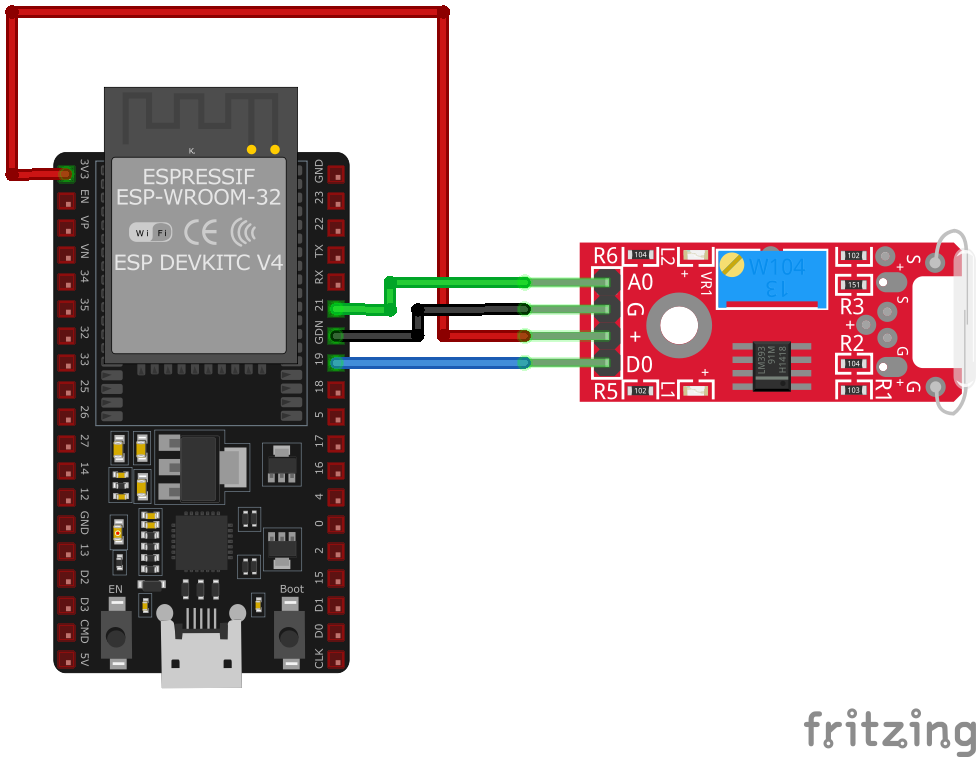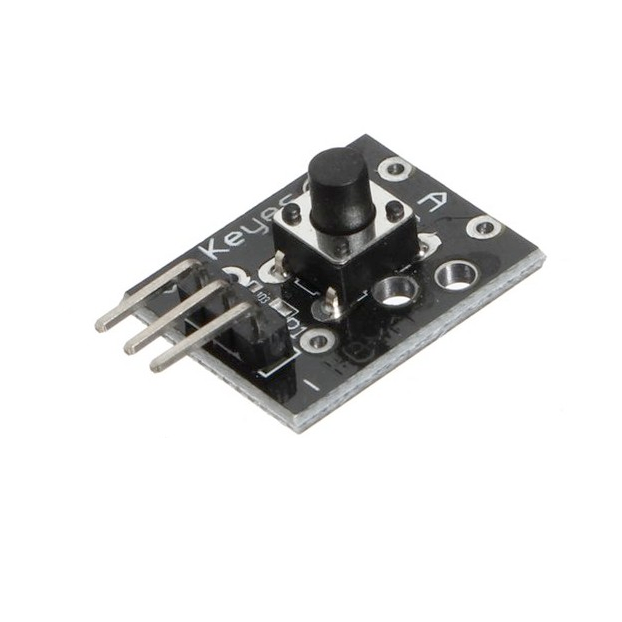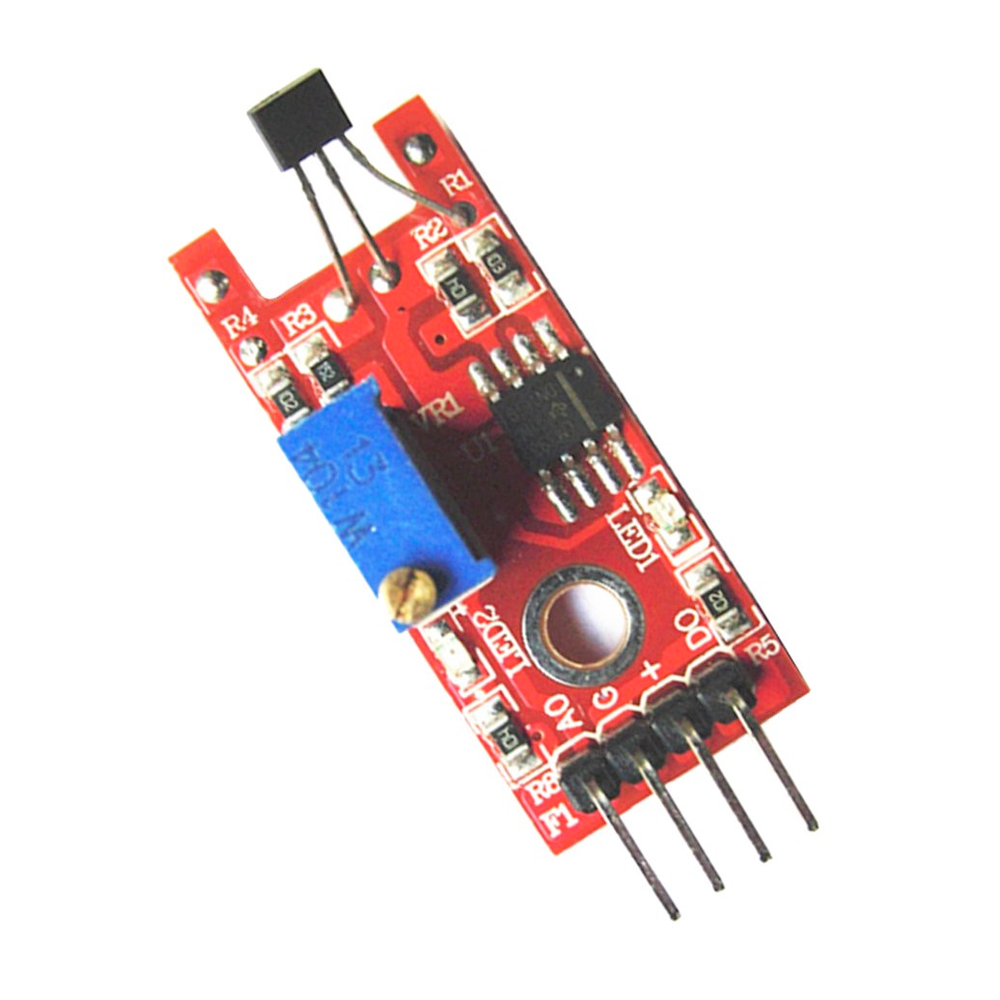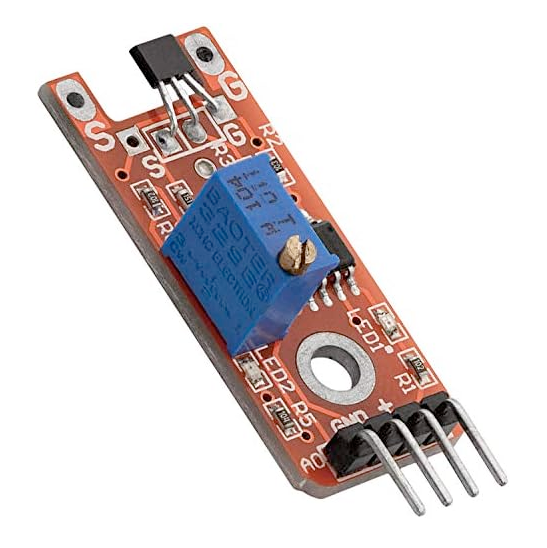ESP32 KY-025 Reed Switch Module
Overview
The KY-025 is a reed switch module that provides both analog and digital outputs. It is equipped with a potentiometer to adjust sensitivity and is suitable for detecting magnetic fields in various applications.
About KY-025 Reed Switch Module
The KY-025 Reed Switch Module is a magnetic sensor that detects the presence of a magnetic field. It features both analog and digital outputs: the analog output provides a voltage corresponding to the magnetic field strength, while the digital output activates when the magnetic field exceeds a user-defined threshold, adjustable via an onboard potentiometer. This module is commonly used in applications such as proximity sensing, position detection, and security systems.
Where to Buy



Prices are subject to change. We earn from qualifying purchases as an Amazon Associate.
Technical Specifications
Pinout Configuration
The VCC pin is used to supply power to the sensor, and it typically requires 3.3V or 5V (refer to the datasheet for specific voltage requirements). The GND pin is the ground connection and must be connected to the ground of your ESP32.
GND:Connects to ground.+V:Connects to 3.3V or 5V power supply.D0:Digital output; goes high when the magnetic field exceeds the set threshold.A0:Analog output; provides a voltage proportional to the magnetic field strength.
Troubleshooting Guide
Common Issues
❌ No Response from Sensor
Issue: The sensor does not provide any output when exposed to a magnetic field.
Solutions:
- Verify all connections are secure and correctly placed.
- Ensure the module is receiving the appropriate voltage (3.3V or 5V).
- Adjust the potentiometer to set the correct sensitivity threshold.
- Test the sensor with a known magnetic source to confirm functionality.
⚠️ Unstable Analog Readings
Issue: The analog output fluctuates without any change in the magnetic field.
Solutions:
- Check for electromagnetic interference from nearby devices.
- Ensure that the power supply is stable and free from noise.
- Use shielded cables for analog signal transmission if necessary.
Debugging Tips
🔍 Serial Monitor
Use the Serial Monitor to check for error messages and verify the sensor's output. Add debug prints in your code to track the sensor's state.
⚡ Voltage Checks
Use a multimeter to verify voltage levels and check for continuity in your connections. Ensure the power supply is stable and within the sensor's requirements.
Additional Resources
Code Examples
Arduino Example
// Declaration and initialization of the input pins
int analog_input = A0; // Analog output of the sensor
int digital_input = 3; // Digital output of the sensor
void setup() {
pinMode(analog_input, INPUT);
pinMode(digital_input, INPUT);
Serial.begin(9600); // Serial output with 9600 bps
Serial.println("KY-025 Magnetic field detection");
}
void loop() {
float analog_value;
int digital_value;
// Current values are read out, converted to the voltage value...
analog_value = analogRead(analog_input) * (5.0 / 1023.0);
digital_value = digitalRead(digital_input);
//... and printed at this point
Serial.print("Analog voltage value: ");
Serial.print(analog_value, 4);
Serial.print(" V, Threshold value: ");
if (digital_value == 1) {
Serial.println("reached");
} else {
Serial.println("not reached");
}
Serial.println("-------------------------------");
delay(1000);
}This Arduino code reads the analog voltage from the KY-025 sensor's analog output and checks the digital output to determine if the magnetic field strength has surpassed the set threshold. The results are printed to the serial monitor every second.
ESP-IDF Example
#include <stdio.h>
#include "freertos/FreeRTOS.h"
#include "freertos/task.h"
#include "driver/adc.h"
#include "driver/gpio.h"
#define REED_SENSOR_ANALOG_PIN ADC1_CHANNEL_0 // GPIO36
#define REED_SENSOR_DIGITAL_PIN GPIO_NUM_17
void app_main(void) {
adc1_config_width(ADC_WIDTH_BIT_12);
adc1_config_channel_atten(REED_SENSOR_ANALOG_PIN, ADC_ATTEN_DB_11);
gpio_set_direction(REED_SENSOR_DIGITAL_PIN, GPIO_MODE_INPUT);
printf("KY-025 Magnetic Field Detection\n");
while (1) {
int analog_value = adc1_get_raw(REED_SENSOR_ANALOG_PIN);
int digital_value = gpio_get_level(REED_SENSOR_DIGITAL_PIN);
printf("Analog Value: %d, Digital Threshold: %s\n", analog_value, digital_value ? "Reached" : "Not Reached");
vTaskDelay(pdMS_TO_TICKS(1000));
}
}This ESP-IDF code reads the analog value from the KY-025 sensor using ADC on GPIO36 and monitors the digital output on GPIO17 to determine if the magnetic field threshold is exceeded. The results are printed every second.
ESPHome Example
sensor:
- platform: adc
pin: GPIO36
name: "KY-025 Magnetic Field Strength"
update_interval: 1s
binary_sensor:
- platform: gpio
pin:
number: GPIO17
mode: INPUT_PULLUP
name: "KY-025 Magnetic Threshold Trigger"This ESPHome configuration reads the KY-025 sensor's analog output on GPIO36 and detects the threshold trigger using GPIO17 as a binary sensor. Updates are logged every second.
PlatformIO Example
platformio.ini
[env:esp32]
platform = espressif32
board = esp32dev
framework = arduinoPlatformIO Example Code
#include <Arduino.h>
#define REED_SENSOR_ANALOG_PIN A0
#define REED_SENSOR_DIGITAL_PIN 17
void setup() {
pinMode(REED_SENSOR_DIGITAL_PIN, INPUT);
Serial.begin(115200);
Serial.println("KY-025 Magnetic Sensor Test");
}
void loop() {
int analog_value = analogRead(REED_SENSOR_ANALOG_PIN);
int digital_value = digitalRead(REED_SENSOR_DIGITAL_PIN);
Serial.printf("Analog: %d, Digital: %s\n", analog_value, digital_value ? "Threshold Reached" : "Not Reached");
delay(1000);
}This PlatformIO code reads the KY-025 sensor's analog output and monitors the digital threshold trigger. The values are printed every second.
MicroPython Example
import machine
import time
REED_SENSOR_ANALOG_PIN = machine.ADC(machine.Pin(36))
REED_SENSOR_ANALOG_PIN.atten(machine.ADC.ATTN_11DB)
REED_SENSOR_DIGITAL_PIN = machine.Pin(17, machine.Pin.IN, machine.Pin.PULL_UP)
while True:
analog_value = REED_SENSOR_ANALOG_PIN.read()
digital_value = REED_SENSOR_DIGITAL_PIN.value()
print("Analog:", analog_value, "Digital:", "Threshold Reached" if digital_value else "Not Reached")
time.sleep(1)This MicroPython script reads the KY-025 sensor's analog signal using ADC on GPIO36 and monitors the digital output on GPIO17. The readings are printed every second.
Conclusion
The ESP32 KY-025 Reed Switch Module is a powerful KY-0xx module sensor that offers excellent performance and reliability. With support for multiple development platforms including Arduino, ESP-IDF, ESPHome, PlatformIO, and MicroPython, it's a versatile choice for your IoT projects.
For optimal performance, ensure proper wiring and follow the recommended configuration for your chosen development platform.
Always verify power supply requirements and pin connections before powering up your project to avoid potential damage.
